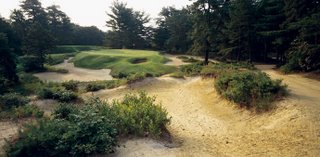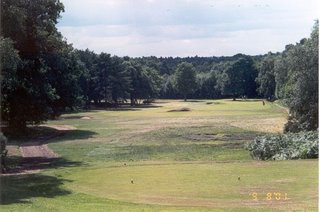10 Golf Courses to Study Golf Architecture – Part I
I thought it would be interesting to see which course have had the most influence on my design ideas and why. What I’m also providing is my list of must see course for any budding golf architect.
1. St. Andrew’s (nature) – the contours make the course
If you could only study one course it would be St. Andrew’s. There are too many lessons to explain, but the one that is most important is the value of a contour on and off the green. St. Andrew’s features some of the boldest undulations on any putting surface, and positional play is important to accessing many of the pins. It shows how great greens can dictate strategy right back to the tee. The wonderful knolls, knuckles, rolls, humps, and hollows found around the greens require additional creativity to deal with. They take a player’s full imagination to overcome and there is nothing more fun than that.
2. Pinehurst #2 (Ross) – the difficulty of short grass
Whether Ross created the fall away greens and chipping areas is a moot point, all that matters is what effect it has on play. Short grass can be a more effective hazard that a bunker, it’s easier for a weaker player, but far more daunting for a better player. The advantage to a weaker player is they can play to their strengths, the disadvantage to a good player is they are faced with too many options. Bad decisions are often a bigger factor than poor execution. They may not need to be a severe as Pinehurst’s greens, but the effect is still the same.
3. Muirfield (H.S. Colt) – adaptable to all conditions and players
The beauty of Muirfield is how well it adapts to all types of conditions and players. H.S. Colt designed a course with two loops in the opposite direction ensuring that the wind would be encountered on all sides and that the wind would never be the same for more than three holes in a row. The bunkering completes this masterpiece by the way its placed. There is room off the tee on most holes, and the player is invited to play a shorter line; but the more aggressive the player gets, the more difficult the course plays. Colt has bunkered in a manner that the landing areas tighten the further the player tries to go. The player is left deciding whether to play safer or risk Colt’s penalty for being too aggressive.
4. San Francisco (Tillinghast) – scale and grandeur
I admire Tillinghast’s ability to think on a grand scale. This is likely the hardest of all the skills to explain or to aquire. San Francisco is as big and wide a golf course that I know, it features some of the most elaborate and bold bunkering that I have ever seen. The delight is how the architecture fits the property through Tillinghast’s use of additional clearing width and large open spaces. It takes a very clever architect to understand how to expand the scale of a golf course without overwhelming everything around it. This is one of the few cases where it works to perfection.
5. Pine Valley (Crump) – difficult does not mean length
Like St. Andrew’s there are too many great lessons to learn, so I will stick with one, yardage. Pine Valley proves that difficulty and length are not synonymous. The course is a relative short 6,600 yards from the tips, and an easy driving course too, and yet it is one of the hardest courses in the world. How? Through intimidation, penal hazards and a series of very difficult approach shots where a miss is punished harshly. Pine Valley has a better variety of hole lengths than any other course in the world. Crump gives you the opportunity to go for a par four and asks you to hit a long running approach into another. Variety is the spice of life and variety in yardages makes for the most interesting golf courses.
The Next 5 Worth Studying: http://thecaddyshack.blogspot.com/2006/03/10-golf-courses-to-study-golf.html












